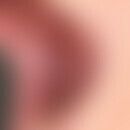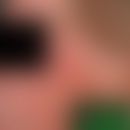Synonym(s)
DefinitionThis section has been translated automatically.
Farnesol (name derived from the acacia species Acacia farnesiana), an aliphatic sesquiterpene alcohol (from farnesyl phosphate) is a colourless fragrance with an intense lily of the valley smell. Farnesol has an antibacterial effect (inhibits the formation of staphylococci and streptococci biofilms). Contact sensitizations are described. The sensitization rate is not clearly clarified (see below fragrances).
Occurrence/EpidemiologyThis section has been translated automatically.
In essential oils like pamarosa oil, anise oil, jasmine oil and rose oil. Farnesol is also an insect pheromone.
Cosmetically, farnesol is used e.g. in deodorants or decorative cosmetics as an odour corrective (e.g. in mascara).
Allergology: Contact sensitizations are described. In larger groups (2021 patients), epicutaneous tests (farnesol 5% in vaseline) showed sensitisation in 1.1% of patients (Schnuch A et al. 2004). The sensitisation rate is not clearly clarified (see below fragrances, see below fragrance mix II)
LiteratureThis section has been translated automatically.
- Gilpin S et al (2010) Allergic contact dermatitis caused by farnesol: clinical relevance
. Cutan Ocul Toxicol 29:278-287 - Lee JH et al (2015) Farnesol inhibits tumor growth and enhances the anticancer effects of bortezomib in multiple myeloma xenograft mouse model through the modulation of STAT3 signaling pathway. Cancer Lett 360:280-293
- Léger Tet al. (2015) The metacaspase (Mca1p) has a dual role in farnesol-induced apoptosis in Candida albicans. Mol Cell Proteomics 14:93-108
Goossens A et al (1997) Allergic contact dermatitis from farnesol in adeodorant. Contact dermatitis 37:179-180.
Schnuch A et al (2004) Contact allergy to farnesolin 2021 consecutively patch tested patients. Results of the IVDK. Contact dermatitis 50:117-121.




